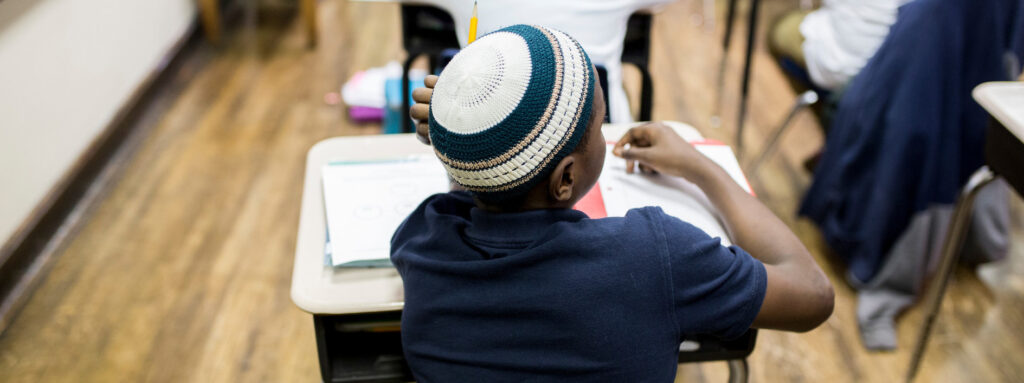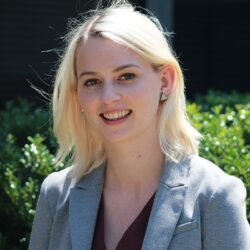Isobel Dewey, a member of PhillyPLUS’ 2016 cohort, is currently STEM Program Director at Mastery Charter’s Simon Gratz campus. She was a founding teacher and creator of the school’s Honors STEM program and began leading the program after its first year. Under Isobel’s guidance, it has given hundreds of Philadelphia kids access to a rigorous STEM education and is growing into a model for programs across the network.
On the first day of school, I show my students a slide breaking down the demographics in Silicon Valley:
Two percent of Google’s employees in the United States are Black. Three percent of Facebook’s employees are Black. Three percent of Microsoft’s employees are Black. And 76 percent of all STEM professionals are men.
I ask the class, “Do we think this is because only white men and white women are interested in science and technology?” And even my middle schoolers say, “No, obviously not.” When we discuss the reasons for this, no matter the year, we always end up with two answers: access and resources.
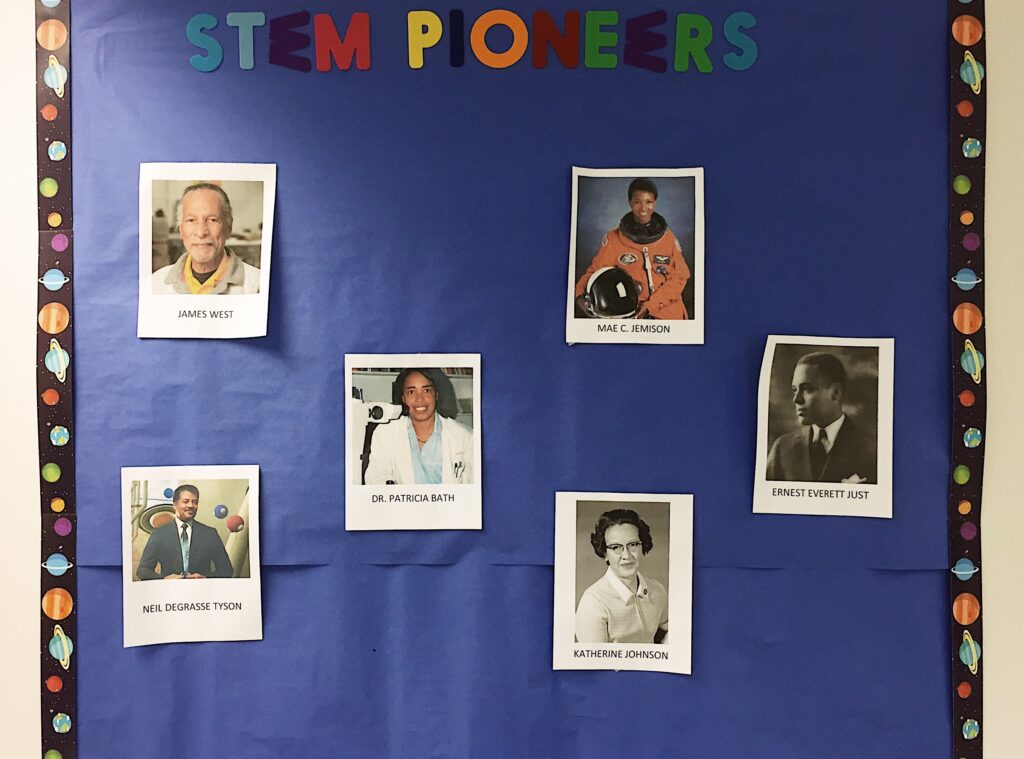
Nationwide, students like mine have less access to rigorous coursework in STEM compared to their white peers—it’s no wonder the tech industry looks the way it does.
It was those same Silicon Valley statistics that inspired me to pursue a career as a science teacher. I studied cognitive science in college, and after graduating began teaching chemistry and biology at Gratz, a charter school in North Philadelphia where our student body is 95 percent Black and five percent Latinx. Nationwide, students like mine have less access to rigorous coursework in STEM (science, technology, mathematics, and engineering) compared to their white peers. For example, while 56 percent of schools with majority white students offer calculus, only one-third of schools with majority Black and Latinx kids offer the course.
It’s no wonder the tech industry looks the way it does when students across the country do not have equal access to schoolwork that sets them up for success in these subject areas. So, when my school received a grant to fund a program for high-achieving kids in our neighborhood at the end of my fifth year, there was no question we’d use it to start a STEM program.
Our classes can be a little scary for people who haven’t seen them before—it’s loud, organized chaos. Kids are rarely in their seats; they’re moving around, working with robots, sketching on computers, and having lively debates—just like they would be if they were working for Google or Facebook, or a lab at one of our awesome local universities. To set kids up for careers in innovative industries, we have to create innovative classrooms. It’s so important my students feel comfortable running their own lab and look to each other for answers, instead of relying on me.
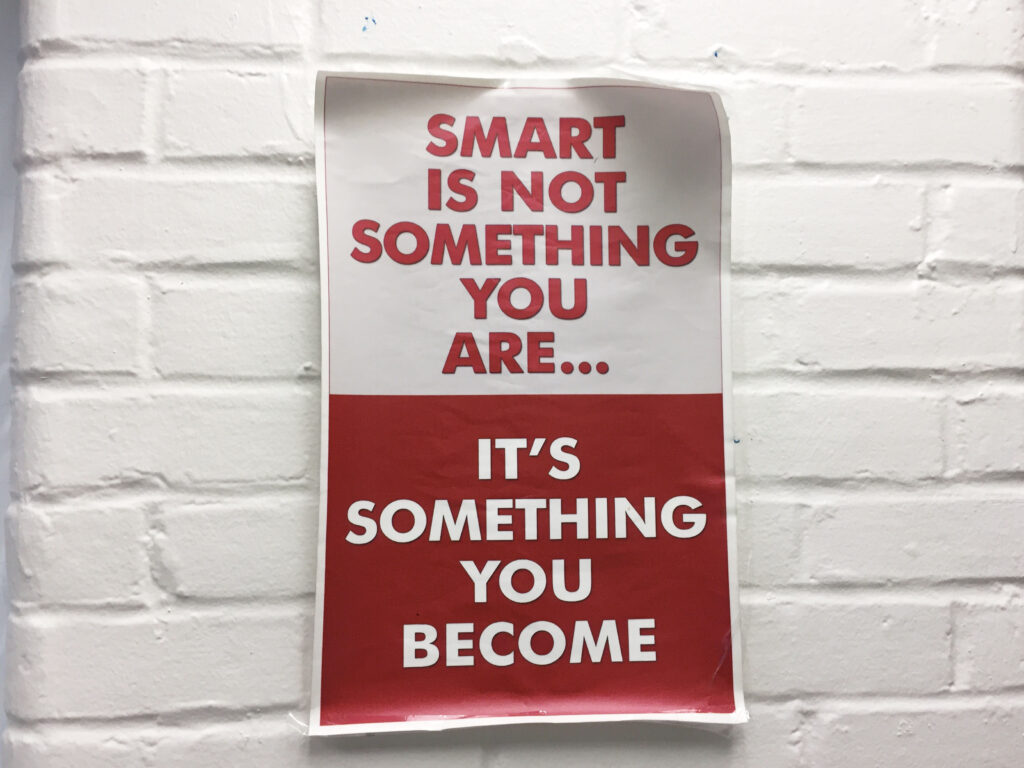
I get to see my students evolve as scholars and people—and access to a rigorous STEM education is at the heart of that process.
As the leader of our Honors STEM program, I get to follow kids through middle and high school, which I didn't necessarily get to do before I took on this role. I get to see them evolve as scholars and people—and access to a rigorous STEM education is at the heart of that process. One of my 12th-grade students comes to mind. Edward started our program as an inquisitive 10th grader with an aptitude for numbers. He was a brave and energetic player on the football field, but hardly ever spoke up in class. Despite his hesitance, he emersed himself in the content and slowly began speaking to partners in his lab group.
Like Edward, students at Gratz are brilliant, but this is not some elite, super-selective program. This is a program for the Philly community, and everything we do goes back to that. We run a summer session every year, and last year our theme was “Becoming STEM Activists.” In groups, kids came up with projects based on how they could use what they learned in class to help their community. A few students noticed people in their homes and on their block were going to the emergency room for little things like the flu or a headache. Given what they knew about the high costs of emergency care, they wanted to figure out why their neighbors were relying on it.
They researched how long it would take to get from their homes to the closest primary care doctor and compared it to the nearest ER, and figured out how much money could be saved by going to a regular doctor. They also estimated how many more primary care doctors were needed in the neighborhood around Gratz, and where they should be located. And all of this hard work went beyond the walls of our school—after completing their research, kids got the opportunity to present a real problem and share practical solutions with their community members.
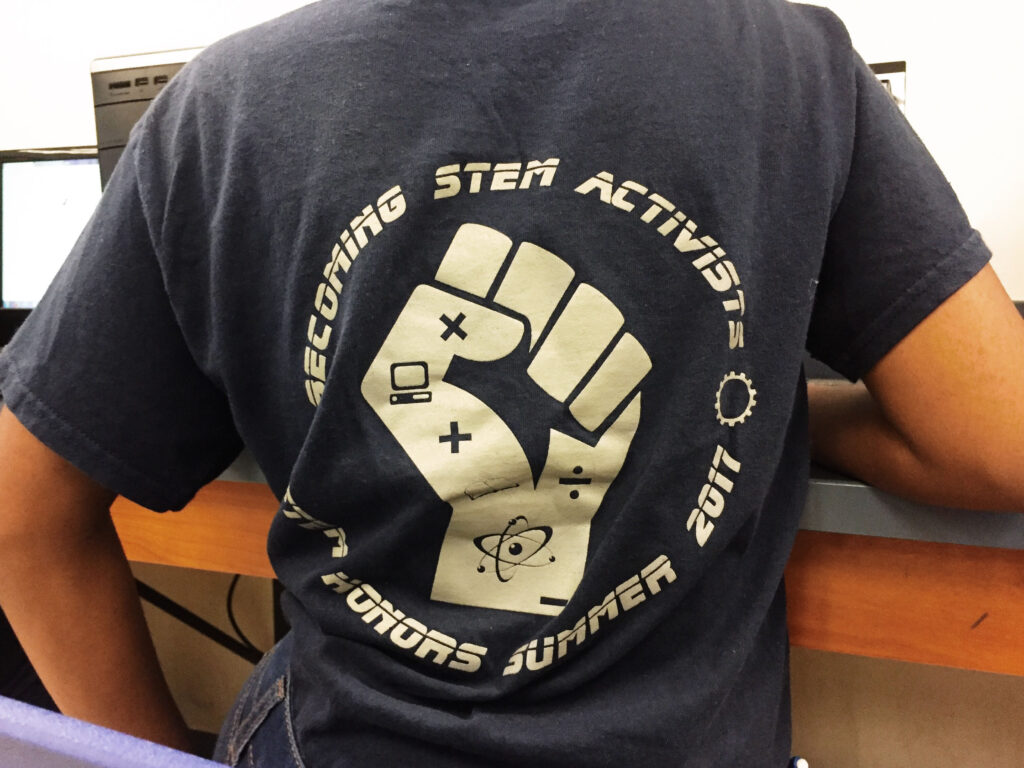
This is a program for the Philly community, and everything we do goes back to that.
This year, we’ve expanded our program to about 140 students, so we're really a school within a school. We also have a partner program for seventh through 10th graders at another school in the Mastery network, so more students than ever have an opportunity to access this curriculum.
In tech, the conversation seems to be, “How do we get more women and people of color interested in our industry?” But to me, that’s the wrong question. All the kids in our program are kids of color, 60 percent of them are girls, and there are thousands of kids like them all over the country, who are interested in STEM and capable of excelling in it. The difference between those kids and our community at Gratz is our students have the resources they need now to be successful in STEM after graduating.
There’s something special about seeing these really shy seventh graders blossom into upperclassmen who are more confident in themselves and what they're doing in the world. Now, beyond his STEM classes, Edward is taking a full AP course load, which includes AP biology and AP government. He’s also on the varsity football team and is being optioned by some fantastic schools—and he wants to get a degree in mathematics.
Applications are open for our 2018 PhillyPLUS Residency Program. Apply now!
